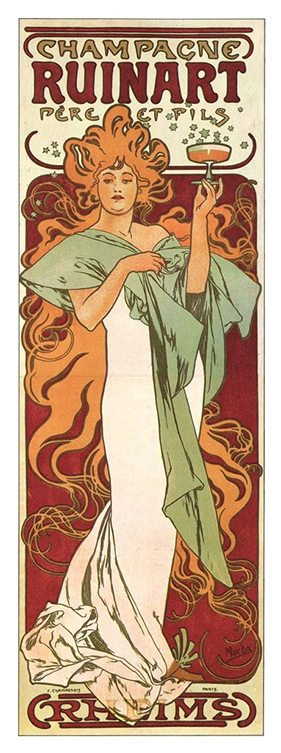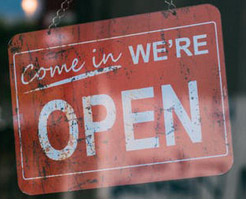All about champagne
- What is champagne?
- The Champagne region
- How is champagne produced?
- Uncorking and serving Champagne
- Champagne storage
- The most popular champagne cocktails
Information & advice
Our customer service team is available for you on Monday through Friday from 8:30 am to 5:00 pm and on Saturday from 8:30 am to 1:00 pm.
020-408 48 51
Champagne house Ruinart

The Style of Champagne House Ruinart, a 'Maison Chardonnay'
The style of Champagne House Ruinart is based on the Chardonnay grape and is classified as a 'Maison Chardonnay.' The bottle in which the champagne is bottled has a distinctive shape, different from the standard champagne bottle. The rounded shape of the bottle is inspired by the design of historical champagne bottles from the 18th century. All cuvées have a blend with a high percentage of Chardonnay. The non-vintage champagne from Ruinart is aged for up to 3 years in the limestone cellars under Reims. The vintage wines, on the other hand, mature for 9 to 10 years.
The Champagnes of Ruinart
The R. de Ruinart Brut champagne has a blend of 40% Chardonnay, 50 to 55% Pinot Noir, and 5 to 10% Meunier and is a prototype of the Ruinart style. A refined, fruity champagne with a long finish and aromas of white pear, dried fruit, and hints of white flowers and brioche.
The Ruinart Blanc de Blancs champagne is the specialty of the champagne house. This fruity champagne is based on Chardonnay, mainly from premier crus. The Blanc de Blancs is a smooth wine with an intense aroma of fresh fruit with notes of citrus and exotic fruit. The Ruinart Rosé champagne consists of 45% Chardonnay, partially blended with blue grapes of the Pinot Noir and 55% Pinot Meunier. A silky champagne with a bright color and aromas of cherries and tropical fruit.
Tribute to Dom Thierry Ruinart
Champagne house Ruinart is located in Reims and was founded in 1729 by Nicolas Ruinart, a textile merchant inspired by the passion and knowledge for champagne of his uncle, the Benedictine monk Dom Thierry Ruinart. He initially gifted the first bottles he produced as business gifts to his textile trade customers.
Dom Thierry Ruinart, like Dom Pérignon, was a monk at the Hautvillers Abbey, which played a crucial role in developing the technique for sparkling wine production. From its inception in 1729 until after World War II, the Ruinart generations succeeded each other until Bertrand Mure took over in 1949 and merged with the owner of the renowned vineyard Château Mouton-Rothschild in Bordeaux, Baron Phillipe de Rothschild. The house grew steadily, but Phillipe de Rothschild sold his share in 1963 to champagne house Moët & Chandon. Ruinart was merged with Moët & Chandon under the name Moët-Mercier-Ruinart, with Bertrand Mure as director. Later, the company was included in LVMH (Louis Vuitton Moët Hennessy), the largest luxury goods holding company, which also owns champagne houses Veuve Clicquot and Mercier.
Discover Ruinart Blanc de Blancs Champagne

Visit Ruinart Champagne House in Reims
Ruinart Champagne House is located in Reims. A visit to Maison Ruinart is a unique experience. The chalk cellars have been a historic monument since 1931. The address is: Champagne House Ruinart, 4 Rue des Crayères, 51100, Reims, France.




